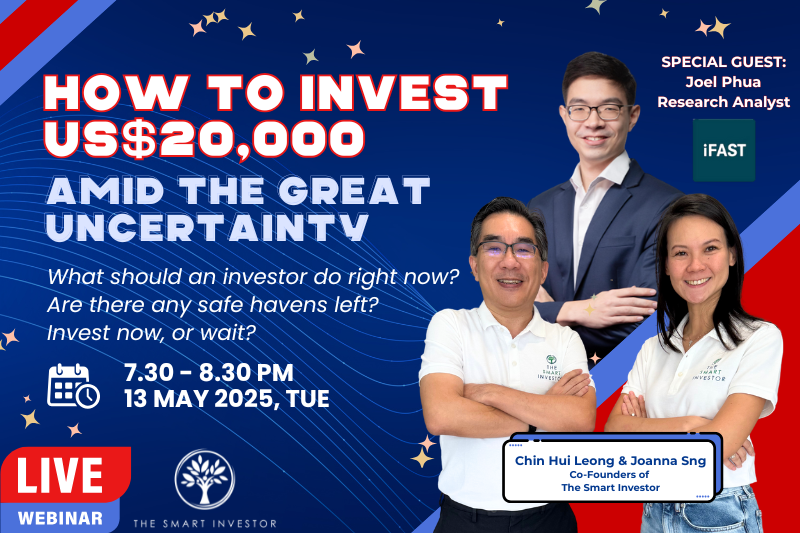Investors can learn a lot about themselves during a stock market downturn.
After all, everyone makes mistakes.
The difference comes in how you learn the right lessons from the past and apply them to the future.
By the same token, as we look back at our past actions, it is imperative that we do not learn the wrong lessons. In that spirit, here are five possible conclusions you should avoid from 2022’s market crash.
1. Avoiding all stocks due to high interest rates
The market decline last year coincided with the US Federal Reserve’s decision to aggressively raise interest rates.
For the record, interest rates were raised from zero in March 2022 to 4.5 per cent in December 2022. During the year, the US benchmark S&P 500 index fell 19.4 per cent and remained 20 per cent below its all-time high.
The simultaneous occurrence of these two events seems to suggest that they are connected.
From there, you would be tempted to conclude that it is the wrong time to invest in stocks until interest rates stop rising.
To be fair, there are real-world consequences to a high-interest rate environment.
For example, debt becomes more expensive to finance. Big ticket items such as housing and vehicles experience sharply lower demand. High-interest rates also strengthen the US dollar, causing non-US revenue to be worth less.
Yet, these impacts are uneven across businesses.
For instance, a company with a high debt load to finance is likely to suffer more than another with no debt. Likewise, a US business that relies on international revenue will face more headwinds compared to a peer which has more domestic sales.
Bottom line: be wary of making blanket conclusions based on interest rates.
2. Timing your entry based on the US Fed’s next move
The concurrent rise in interest rates and falling stock prices last year gives rise to the tempting idea that you can time your entry into the stock market.
All you have to do, you may reason, is to figure out when the US central bank will stop raising interest rates.
Beware, dear investors. It’s a mental trap.
While the two factors may seem correlated, this premise does not hold upon closer scrutiny.
Firstly, the S&P 500 peaked in early January 2022, two months before the US Fed made its first interest rate hike for the year. In addition, the index also hit a 52-week low in mid-October 2022 and has since risen 18 per cent from there.
Investors looking for a signal before buying will be left out.
In fact, interest rates have continued their upward trajectory in 2023.
Hence, expecting interest rates and stock markets to act as a perfect counterbalance against each other will only leave you disappointed.
That’s why Peter Lynch believes in being fully invested. It’s a great feeling to be caught with your pants up, he says.
3. Selling before the bad news hits
In theory, the delight in winning S$1,000 should be no different from the agony of losing S$1,000.
Studies have shown, however, that the emotional pain of losing a sum of money is far greater than the joy derived from gaining the same amount of money.
As such, some investors actively try to exit a stock before bad news hits.
This idea is an illusion, in my view.
In today’s connected world, if there is a new development which negatively impacts a business, its stock price would have fallen way before you have the chance to open your brokerage account.
The other tempting idea would be the use of a stop loss.
That wouldn’t work either, and here’s why: if the fear of loss drives your investing actions, then it is highly unlikely that you will suddenly find the courage to buy when stock prices are lower after you had sold.
Simply said, the best investment strategies in the world will be useless unless you have the courage to act.
4. Falling for the stock price narrative
When a stock price falls significantly, there is an immediate assumption that something terrible has happened to the company.
That may be true, but it is not always the case.
The recent events at Meta Platforms (NASDAQ: META) provide a good case study.
When the social network company revealed that its Facebook app had lost a million daily active users (DAU) in its 2021 fourth quarter (4Q’21), shares collapsed 26 per cent in a single day.
Predictably, the financial media made a meal out of this sole data point, warning of perfect storms and death spirals amid a dire image of fleeing users.
Again, investors need to keep their thinking hats on.
A simple check on the 4Q’21 earnings presentation would reveal that the one million loss represented a mere 0.05 per cent of Facebook’s 1.929 billion DAU base.
Now, that’s what I call making a whale out of an ikan bilis.
Indeed, Meta Platforms added 31 million DAUs the following quarter and ended up with 108 million more DAUs five quarters later, making a pleasing mockery of the fear-mongering headlines.
Share prices, in turn, have risen by over 165 per cent from their 52-week low.
5. Waiting for lower volatility
Finally, the stock market’s rise and subsequent fall over the past three years has been akin to a roller coaster ride.
Naturally, weary investors out there may long for less volatile times.
Yet, as investors, we have to accept that there is a price to pay for achieving satisfactory returns; to do so, you have to navigate through choppy waters from time to time.
Why?
As my friend Eugene Ng points out, missing the best days in the stock market is far worse than missing the worst days.
For comparison, between 2003 and 2022, you would have received a 9.8 per cent annualised return if you invested in the S&P 500 index, adding up to a handsome 5.4 times total gain.
Here’s the kicker.
Missing the 10 best days during this period would reduce your return a mere two times. It gets worse: if you miss out on 30 best days, your return would dwindle to a measly 0.1 times.
There’s more to consider.
The best days and worst days in the stock market often happen close to each other.
Therefore, trying to time your entry for the best while avoiding the worst is a fool’s errand.
You’re better off staying put, staying invested, and most of all, maintaining a long-term view of the stocks you own as businesses.
Just as Peter Lynch suggested.
Note: An earlier version of this article appeared in The Business Times.
Are we really ready to live in a world with AI that could potentially take over our jobs? Check out our latest Special Free Report on this fascinating topic. We cover the latest developments in AI and how they could impact your life and investments. Click here to download a copy now.
Follow us on Facebook and Telegram for the latest investing news and analyses!
Disclosure: Chin Hui Leong owns shares of Meta Platforms.




